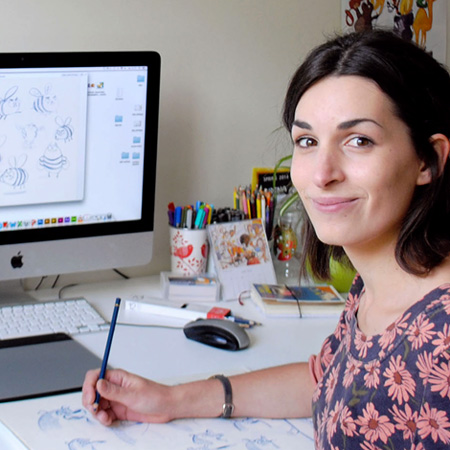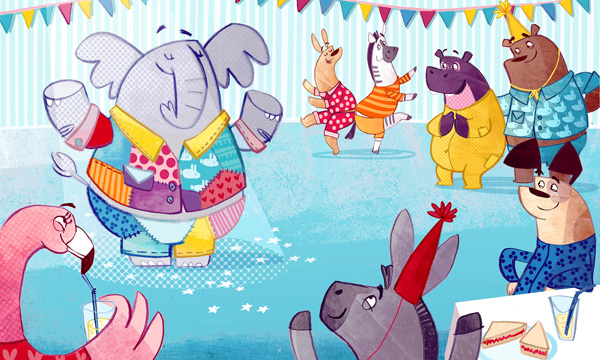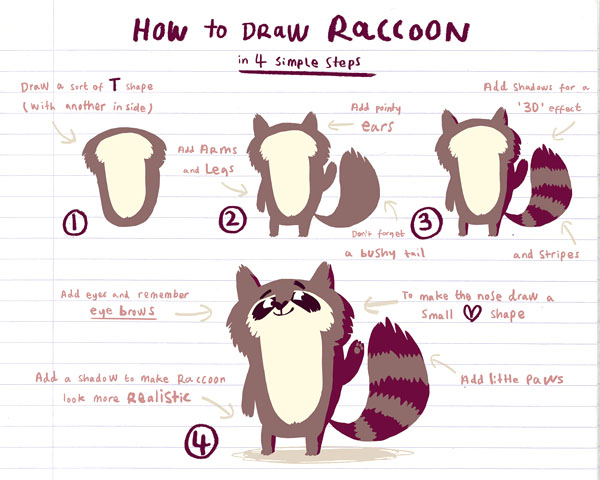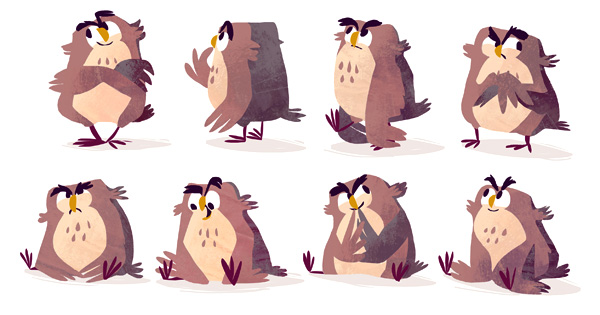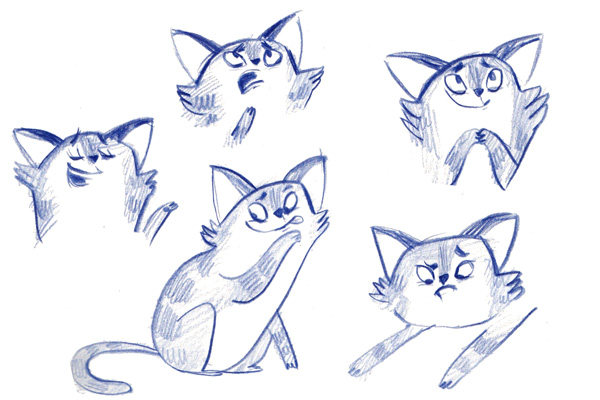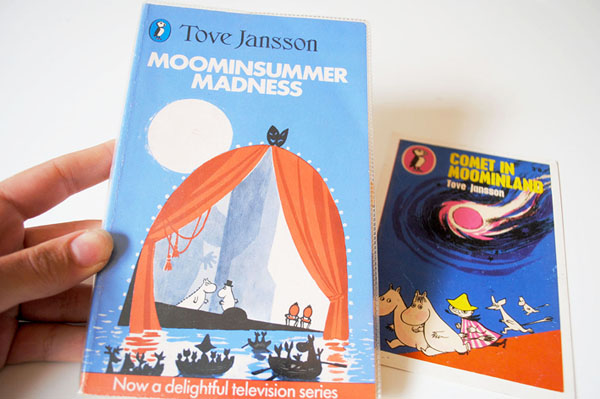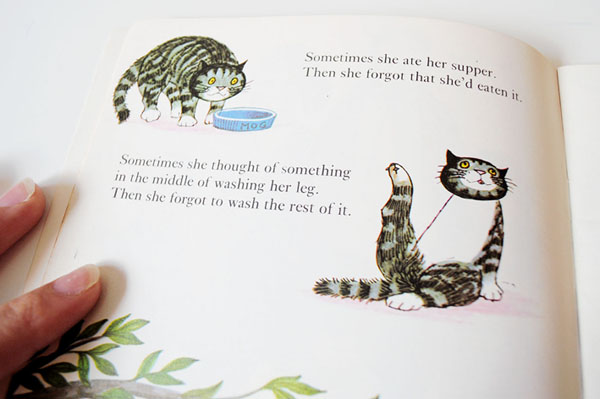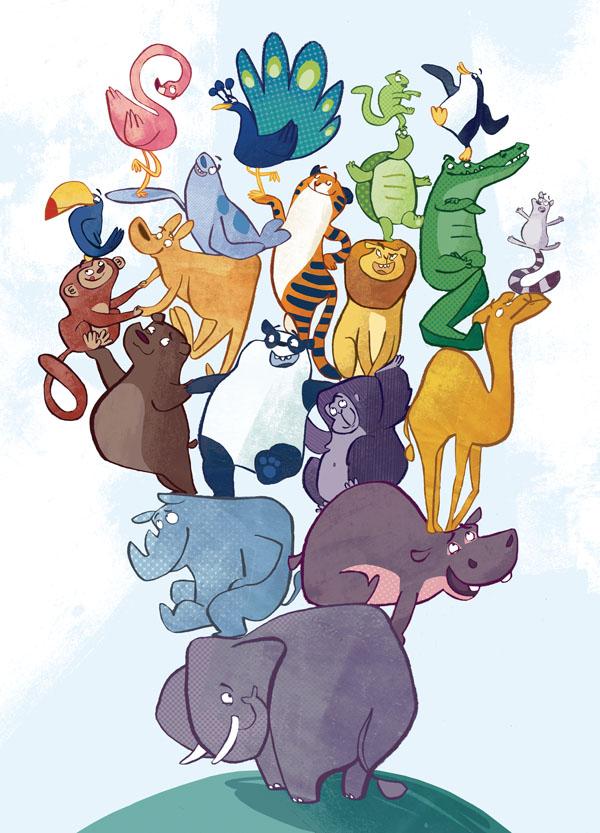[one_third]
[/one_third]
[two_third_last]
Emily Fox has had a busy year since she graduated from her degree in Illustration. She’s delighted our clients with her bold use of line, fresh colours and has shown a natural talent for character design. She is currently engrossed in illustrating her first picture book with Harper Collins but she spared us some time to answer a few questions about her top tips on drawing and where she finds inspiration.
Elephant’s Pyjamas
You are particularly well known for your joyful critter creations, do you ever draw animals from life? Do you have any top tips for drawing engaging and characterful animals?
I find sketching from observation a particularly useful practice. It helps me to invent new animal characters by observing real-life animal movement and behaviour. Sometimes I’ll take my sketchbook to the Zoo in the hope of capturing a new character! When coming up with a new animal character the first thing I do is draw from observation, then working from these initial sketches I’ll use my imagination to develop a more stylized character. I tend to draw lots of variations on one character and then pick my favourite. After I’ve worked out how a character may look, I try to bring them to life. I think about how they might act, or how they may look when feeling happy, sad or cross. I consider the faces they might pull, or the body language they may use, even whether they stand on two legs like a human or use all four. Taking time to work this out makes a character much more believable.
Character design process from sketch to artwork
JUST FOR FUN – Could you show us a 4 step guide to drawing a racoon?
How to draw a Racoon
If we magically manifested a time machine and sent you back to a specific period in history to seek inspiration where would you go and why?
If I could travel back in time I’d have to go back to the golden age of animation. I’m a huge fan of retro animation. When I was younger I watched many Walt Disney, Warner Bros and MGM Hanna-Barbera cartoons, and still do now! I feel there’s so much life and energy in early cartoons. I really admire the animation design and from this period – the striking black and white design later followed by brave use of colour, the charmingly painted scenery and iconic characters. Mickey Mouse, Tom and Jerry, Bugs Bunny, Felix the Cat, to name a few. It would have been such an experience to go to these studios, meet the makers and see them in action.
Grumpy Owl
Can you explain what happens on an average day in the life of an illustrator?
First of all I write a list of jobs for the day. This is largely for the sense of fulfilment I get when crossing a completed job off the list, but it’s also good practice to be organised. Then I properly get started. I try to tackle the most difficult job of the day in the morning and then it’s out of the way quickly. I will usually begin an illustration by sketching out rough ideas in my sketchbook, normally using a blue pencil crayon – my favourite colour! Once I’ve gotten my ideas onto paper I decide which is best and start to work on it digitally. I tend to take a scan of my hand drawing and then use Adobe Photoshop to add colour, pattern and texture. Then it’s time for lunch. It’s good to refuel before an afternoon of drawing and to take a break from the computer screen. There are days when I have a little panic about imminent deadlines, but a cup of tea usually resolves this. If I find my concentration begins to slip in the afternoon I have a quick break and email friends, or sometimes I take time out to work on my own personal projects. I always like to end a day doing something a bit different. Sometimes I go to life drawing class, or my Brownie group, other days I just go out for a run!
Billie sketches
You have an extensive collection of children’s books – which are your favourites and if you could collaborate with any contemporary author who would you choose?
Choosing a favourite children’s book is a very tough decision, very tough indeed! When I was younger I loved Tove Jansson’s ‘Finn Family Moomin Troll’ series. I still like to read these books as an adult and with just as much pleasure as when I was a child. There are so many reasons why these books appeal to me, but I think the main one has to be the wonderfully bizarre characters. The books feature such strange characters, but as you come to know them they begin to make perfect sense, even the Hattifatteners and The Groke. Perhaps another reason for my attachment to the Moomin books is that when I was younger (and felt particularly naughty) I was a lot like Little My. I used to really enjoyed reading the mischievous characters shenanigans.
Tove Jansson Moomin Troll Series
Another favourite is Judith Kerr’s ‘Mog the Forgetful Cat’. When I was younger I remember asking my parents to read me this book a lot. I suppose I’ve always been a cat lover. I enjoy the clever little observations and often think ‘oh my cat does that too!’. Coincidentally, my pet cat also looks a lot like Mog, making it very easy to relate.
Mog the Forgetful Cat by Judith Kerr
Do you have any top tips for budding illustrators about how they should curate their portfolios?
I suppose my top tip would have to be to keep drawing, draw all the time. The more artwork you make, the more artwork you have to show. However, remember to include artwork relevant for the area of illustration where you’d like to find work. It’s also important to be proud of the work in your portfolio. Only include pieces you like, it’s a good skill to talk positively about your work and believe in what you do. Finally remember to give yourself a pat on the back, curating a portfolio is a challenge!
Animal Poster
Do you find social media is a useful promotional tool and how do you use it?
I’ve found Twitter very useful as a practicing artist. It’s a great way to stay in touch with friends and fellow Freelancers. It makes a potentially lonely job much friendlier. Twitter also provides a great opportunity to promote your work. You can simply link to a blog or portfolio site for more exposure, or share artwork that might otherwise be left unseen, such as sketches or doodles. Seeing what goes on behind the scenes is great for nosey people like myself!
You can see more of Emily’s work on her own website, blog and she also has a shop!
[/two_third_last]
